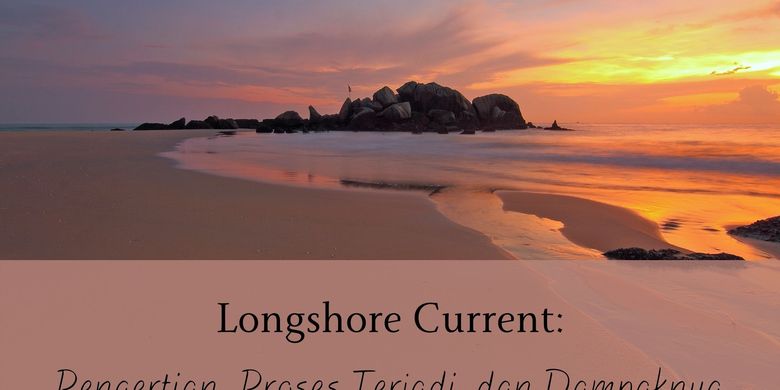KOMPAS.com – Longshore current in Indonesian it is called current along the coast. Sometimes it is also known as littoral current.
Compared to other types of currents, longshore current often occurs in areas closest to the coastline.
Do you know what it is longshore current?
Definition longshore current
According to Marwadi in the journal Innovation to Overcome Siltation at the Tapak Padri Port, Bengkulu City (2016), longshore current is the movement of water masses that move parallel to the shoreline.
This movement is caused by water waves hitting the beach at a certain angle from a direction that is not perpendicular to the beach.
Read also: Kuroshio Stream: Current Flowing in the Waters of Japan
Quoted from the journal Design of a Coastal Protective Building as Abrasion Prevention in the Ujung Jabung Coastal Area, Jambi Province (2016) by Luqman Hadiyan Faza and Yessi Nirwana Kurniadi, longshore current occurs between the breaking wave area and the shoreline, where when the wave comes it forms an oblique angle.
Current along the coast low speed. However, greatly affects the process littoral transportnamely the movement of sediment in the area near the coast caused by waves and water currents.
The process of occurrence longshore current
The most important parameters in determining the speed of the current along the coast are the height and angle of incidence of the waves.
According to Setiya Kusuma Anggraeni, et al in the journal Characteristics of the Dominant Velocity and Direction of Parallel Current (Longshore Current) at Larangan Beach, Tegal Regency, Central Java (2016), the difference in the depth of the beach greatly affects the shape of the wave.
At a certain level of depth, the crest of the wave will be sharper and unstable. As a result, the wave will break.
The angle formed between the breaking waves and the shoreline is what creates a current along the coast or longshore current.
Read also: Benefits of Ocean Currents in Daily Life
This current is one of the main factors forming coastal morphology. Because it can move sediment particles that can cause abrasion and sedimentation.
Reported from the site Studythe factor that affects the direction and strength of the current along the coast and the angle of approach of the waves is the wind.
However, this current can also be influenced by the level of wave speed and contact with other ocean currents, such as rip current.
Basically, longshore currents can occur on any stretch of coast that is regularly hit by breaking waves.
Impact longshore current
The main impact of the occurrence longshore current or longshore currents is the movement of sediment along the coast. This can cause sedimentation or abrasion.
Quoted from the journal Study of the Effect of Longshore Current on Abrasion at Moro Beach, Kendal Regency, Central Java (2020) by Wita Melisa et al, the energy generated from currents along the coast will carry sedimentary material to the coast. This causes a change in the coastline.
Read also: Ocean Currents: Definition and Factors
In conclusion, there are two impacts longshore currentnamely:
- Movement of sediment along the coast causing abrasion or sedimentation
- The coastline changes to be meandering.
Get updates news of choice and breaking news every day from Kompas.com. Let’s join the Telegram group “Kompas.com News Update”, how to click the link https://t.me/kompascomupdate, then join. You must first install the Telegram application on your cellphone.–


